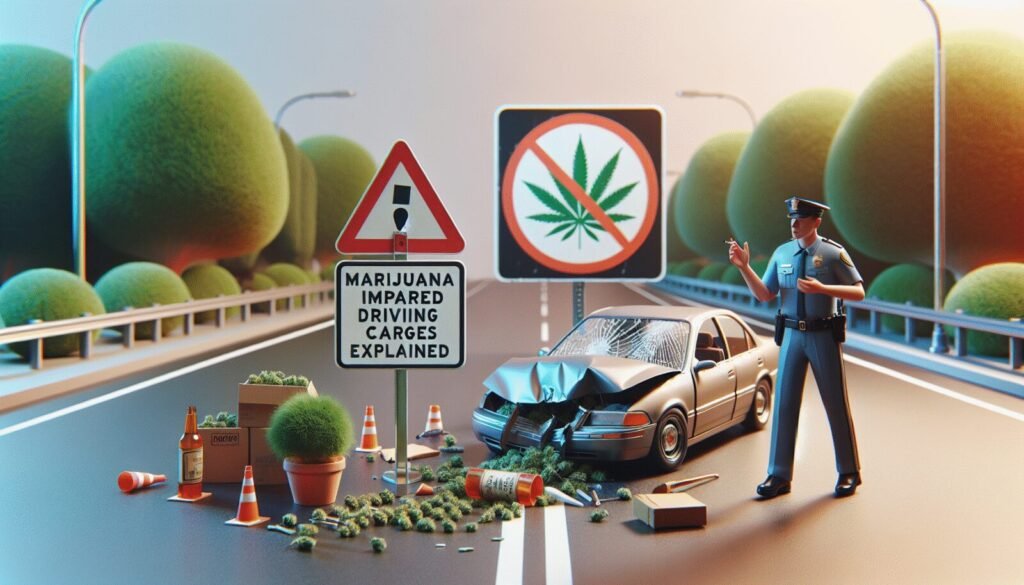marijuana impaired driving charges explained

The legalization and decriminalization of marijuana have sparked significant debate across Canada, particularly in Ontario. While many welcome the change, concerns persist regarding the implications for public safety, especially when it comes to driving under the influence of cannabis. Understanding the complexities of drug-impaired driving laws is crucial for anyone navigating these new regulations.
In this article, we will explore the challenges posed by drug-impaired driving legislation, the testing procedures involved, and the implications for drivers in cities like Toronto, Ottawa, and Hamilton. By delving into the facts and statistics surrounding marijuana use and driving, we aim to provide clarity on an issue that affects many Ontario residents.
Understanding drug-impaired driving laws
The recent legislative changes surrounding marijuana have introduced new complexities into drug-impaired driving laws. Law enforcement now has expanded authority to conduct roadside saliva tests when they suspect a driver may be impaired by cannabis. A positive result can lead to an arrest and subsequent assessment under the Drug Recognition Expert (DRE) testing regime.
While the intention behind these measures is to enhance road safety, there are significant concerns regarding their effectiveness. The DRE testing process involves a series of evaluations, including:
- Divided attention tests (e.g., walk-and-turn test)
- Assessment of vital signs such as blood pressure and pulse
- Evaluation of pupil size and muscle tone
- Inspection for injection sites
However, critics argue that these tests do not reliably indicate impairment due to marijuana. Unlike alcohol, where a clear correlation exists between blood alcohol content and impairment, marijuana's effects on the nervous system are more nuanced. This gap in evidence raises concerns about the validity of convictions based solely on DRE evaluations.
The limitations of DRE testing
The DRE testing regime has been scrutinized for its lack of scientific backing, particularly regarding marijuana use. Research indicates that the tests used under this regime were designed primarily to identify alcohol impairment, and their application to cannabis impairment lacks empirical support.
Studies reveal that:
- Marijuana affects the nervous system in ways that differ from alcohol.
- No established correlation exists between poor performance on divided attention tests and actual impairment from marijuana.
- Factors such as age, gender, and alcohol consumption can distort the relationship between cannabis use and driving performance.
For instance, some studies suggest that drivers involved in accidents who show evidence of marijuana use may not necessarily be more dangerous than those who do not use cannabis. This revelation suggests that many cannabis users might choose to stay off the roads or drive no worse than their sober counterparts.
Statistics on drug-impaired driving
As cannabis use grows, so do the statistics around drug-impaired driving. In Ontario, the rise in marijuana consumption has led to increased scrutiny of driving behaviors and crash rates.
According to recent data, the following trends have emerged:
- Increased rates of cannabis-related driving incidents have been reported.
- Many drivers involved in crashes test positive for THC, the active ingredient in marijuana.
- After controlling for variables like alcohol consumption, evidence suggests that the correlation between marijuana use and crash rates diminishes.
This data prompts a reevaluation of how marijuana impairment is perceived and addressed legally in cities such as Brampton and Mississauga, where the population density and traffic may exacerbate concerns about road safety.
How long after smoking can you get a DUI?
One of the most pertinent questions surrounding drug-impaired driving is the timing of marijuana's effects. Unlike alcohol, which can be measured through breathalyzers, determining impairment from marijuana is more complicated. Factors influencing impairment duration include:
- The method of consumption (smoking, edibles, etc.)
- The potency of the cannabis strain
- Individual tolerance and metabolism
Generally, cannabis can remain detectable in the body for several hours after use, but its psychoactive effects may last only a few hours. Therefore, it is possible to be charged with a DUI if an officer suspects impairment, even if the driver consumed marijuana several hours prior to driving.
The role of gummies and other edibles
The rise of cannabis edibles, such as gummies, has added another layer of complexity to the discussion surrounding drug-impaired driving. Edibles can produce stronger, longer-lasting effects compared to smoking, which can lead to unexpected impairment after consumption. Key points to consider include:
- Edibles take longer to affect the user, leading some drivers to underestimate their impairment.
- The dosage in edibles can vary widely, making it difficult for users to gauge their level of impairment.
- Inexperienced users might consume more than intended, increasing their risk of impairment while driving.
Given these factors, users should exercise extreme caution when considering driving after consuming cannabis-infused products, especially in bustling urban areas like Toronto and Ottawa.
As Ontario continues to navigate the evolving landscape of marijuana legalization, the implications for drug-impaired driving remain a pressing concern. While law enforcement aims to ensure road safety, the validity of current testing methods and the interpretation of marijuana impairment are areas that require further study and refinement.
If you find yourself facing charges related to marijuana-impaired driving, it is crucial to seek legal representation. Understanding your rights and the nuances of the law can make a significant difference in the outcome of your case. Reach out to experienced legal professionals who can guide you through the complexities of navigating DUI charges in Ontario.
Interested in similar topics to marijuana impaired driving charges explained? Explore more in the Legal Process and Defence Strategies category.

Leave a Reply